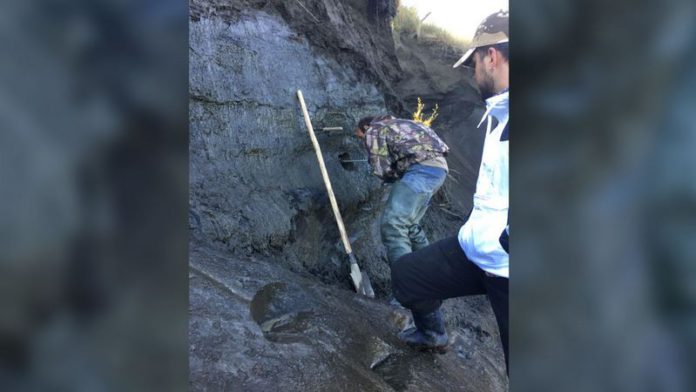Warmer temperatures in the Arctic are thawing the region’s permafrost — a frozen layer of soil beneath the ground — and potentially stirring viruses that, after lying dormant for tens of thousands of years, could endanger animal and human health.
While a pandemic unleashed by a disease from the distant past sounds like the plot of a sci-fi movie, scientists warn that the risks, though low, are underappreciated. Chemical and radioactive waste that dates back to the Cold War, which has the potential to harm wildlife and disrupt ecosystems, may also be released during thaws.
“There’s a lot going on with the permafrost that is of concern, and (it) really shows why it’s super important that we keep as much of the permafrost frozen as possible,” said Kimberley Miner, a climate scientist at the NASA Jet Propulsion Laboratory at the California Institute of Technology in Pasadena, California.
Permafrost covers a fifth of the Northern Hemisphere, having underpinned the Arctic tundra and boreal forests of Alaska, Canada and Russia for millennia. It serves as a kind of time capsule, preserving — in addition to ancient viruses — the mummified remains of a number of extinct animals that scientist have been able to unearth and study in recent years, including two cave lion cubs and a woolly rhino.

The reason permafrost is a good storage medium isn’t just because it’s cold; it’s an oxygen-free environment that light doesn’t penetrate. But current day Arctic temperatures are warming up to four times faster than the rest of the planet, weakening the top layer of permafrost in the region.
To better understand the risks posed by frozen viruses, Jean-Michel Claverie, an Emeritus professor of medicine and genomics at the Aix-Marseille University School of Medicine in Marseille, France, has tested earth samples taken from Siberian permafrost to see whether any viral particles contained therein are still infectious. He’s in search of what he describes as “zombie viruses” — and he has found some.
The virus hunter
Claverie studies a particular type of virus he first discovered in 2003. Known as giant viruses, they are much bigger than the typical variety and visible under a regular light microscope, rather than a more powerful electron microscope — which makes them a good model for this type of lab work.
His efforts to detect viruses frozen in permafrost were partly inspired by a team of Russian scientists who in 2012 revived a wildflower from a 30,000-year-old seed tissue found in a squirrel’s burrow. (Since then, scientists have also successfully brought ancient microscopic animals back to life.)
In 2014, he managed to revive a virus he and his team isolated from the permafrost, making it infectious for the first time in 30,000 years by inserting it into cultured cells. For safety, he’d chosen to study a virus that could only target single-celled amoebas, not animals or humans.
He repeated the feat in 2015, isolating a different virus type that also targeted amoebas. And in his latest research, published February 18 in the journal Viruses, Claverie and his team isolated several strains of ancient virus from multiple samples of permafrost taken from seven different places across Siberia and showed they could each infect cultured amoeba cells.


